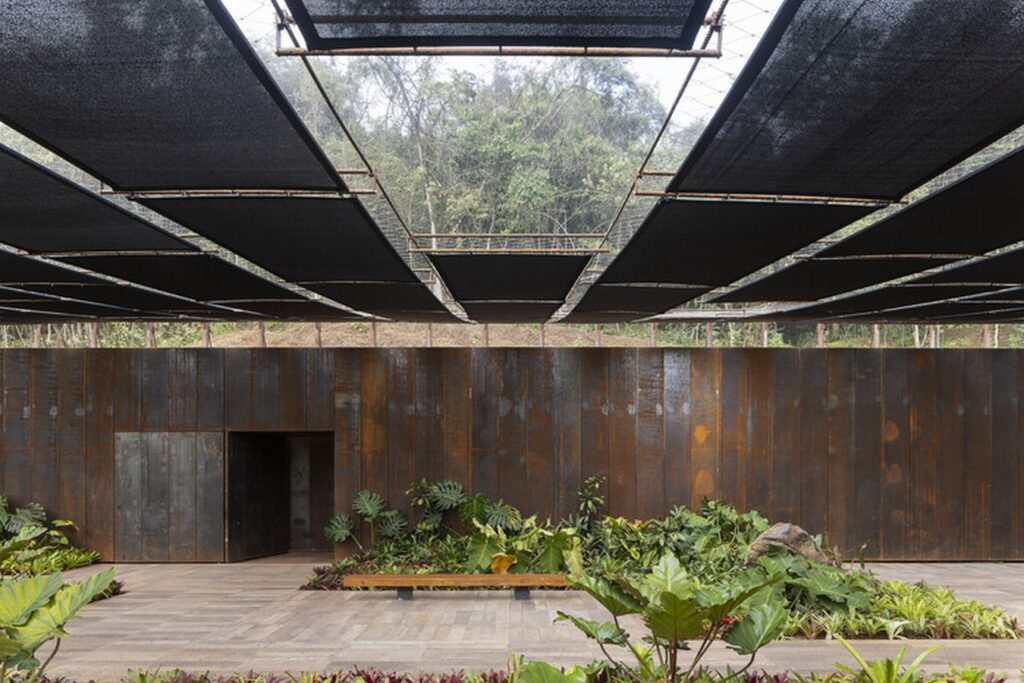The collaboration between MACh Arquitetos and Rizoma Arquitetura has given rise to a striking pavilion in Brazil, designed to house two iconic installations by the renowned artist Yayoi Kusama at Inhotim. The pavilion not only serves as a sanctuary for these artworks but also creates a unique space for visitors to immerse themselves in the transformative experience offered by Kusama’s art.

Design Concept
The architectural design of the pavilion is a response to the anticipated influx of visitors, drawn by the allure of Kusama’s installations. Beyond mere shelter, the pavilion aims to provide a comfortable waiting area while preparing the public for the unparalleled artistic encounter that awaits them.
Shading Structure
A minimalist approach is adopted for the shading structure, with a network of cables arranged in parallel lines that follow the natural contours of the site. These cables, gently curving from the highest point to the lowest, metaphorically echo the original topography of the land. By embracing the existing site conditions, the design seamlessly integrates with the surrounding landscape.

Sustainable Features
In harmony with the shading structure, a flexible metal mesh supports the growth of Congea tomentosa, a climbing plant introduced to Brazil by Roberto Burle Marx. This choice is deliberate, offering not only shade and rainwater retention but also aesthetic appeal with its ever-changing flower colors. The Congeia symbolizes the passage of time and the constant evolution of nature.
Spatial Configuration
The pavilion’s architecture is not conceived as a detached entity but as a topographical intervention that harmonizes with the site’s terrain. It slopes gently towards the central pavilion, a vertical concrete plane that spans the entire length between the lateral slopes. This seamless integration blurs the boundaries between architecture and landscape.

Inviting Spaces
Throughout the pavilion, small gathering areas with wooden benches beckon visitors to linger, whether to contemplate the artworks or simply enjoy the serene surroundings. The design encourages interaction and contemplation, fostering a sense of connection with both art and nature.
A Landscape Intervention
Viewed from above, the pavilion emerges as a vibrant intervention in the landscape, bridging the natural forest and the manicured garden of Inhotim. Its colorful presence hints at the enchanting world that awaits discovery, inviting visitors on a journey of exploration and wonder.
Inhotim’s Pavilion for Yayoi Kusama stands as a testament to the power of architecture to complement and elevate the artistic experience, offering a harmonious fusion of art, nature, and human ingenuity.





















Leave a Reply